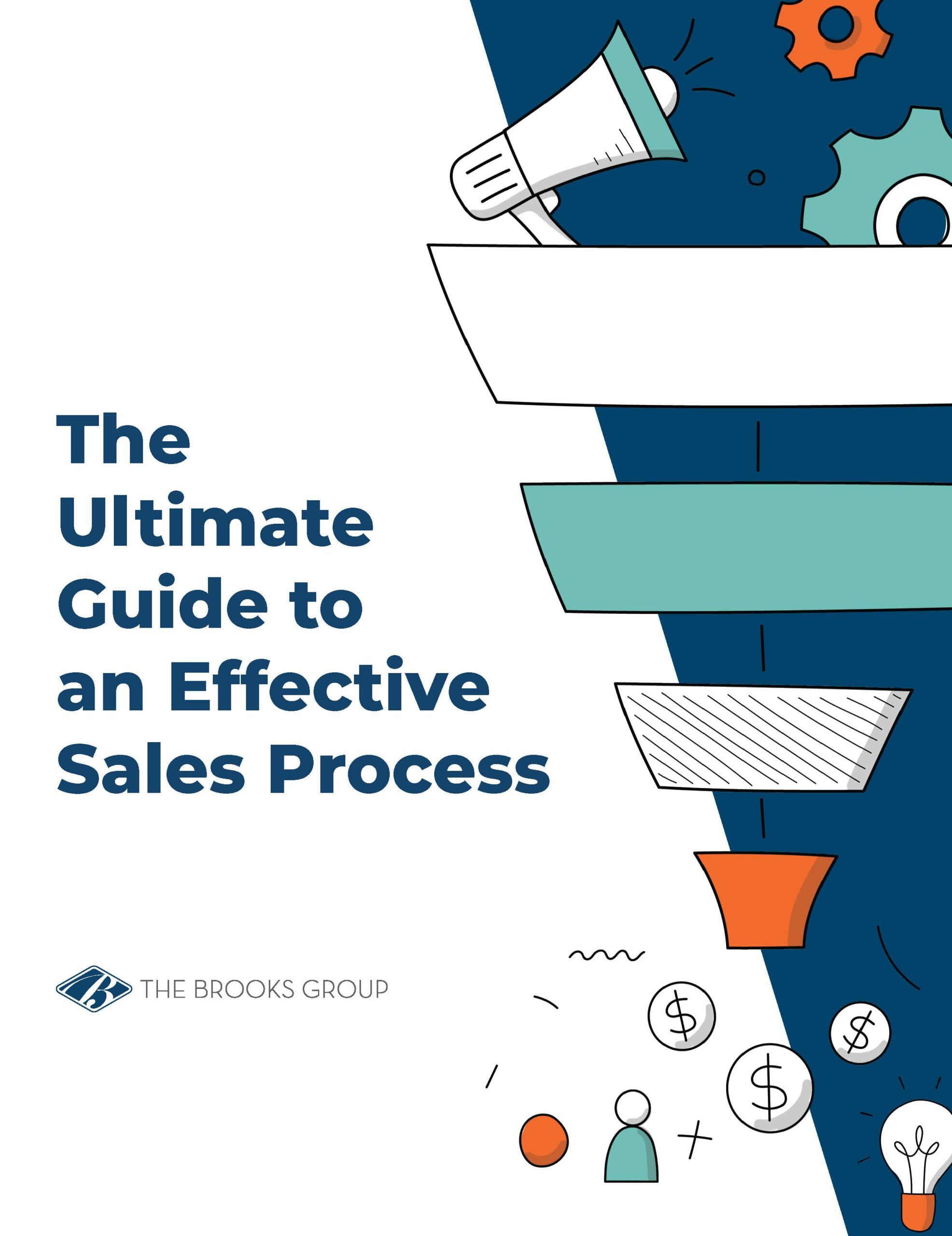A sales strategy is the answer to a simple question: ‘Why am I doing the things I’m doing?’ Once you define the big picture, you can work backward from there to design your action plan.
In sales, your goal may be to own a certain share of the market. To do that, the company needs to win a set percent of deals in the sales pipeline. And to win those deals, you need to coordinate the best mix of inbound and outbound sales tactics.
Strategy is a guide to help you know whether you’re moving towards the goal you hope to achieve. Are my activities helping me get closer to that goal or are they working against me?
Your sales strategy is a long-range plan for reaching your goal. The steps you take to reach that goal are tactics. Imagine you’re on a journey. The destination is your goal and the map shows the route to get there.
WATCH ON DEMAND: Building a Successful Sales Strategy for 2024
Here are four steps for building the right sales strategy.
Step 1: Establish Your Strategic Sales Priorities
There is a sales questioning technique called “3-Deep.” When you use this technique, you start by discovering the need. Then you question to the want. Lastly, you explore the why.
To set a sales strategy, you want to invert that. You want to start with the why, and then work backward to the priorities that you’ll need to institute to fulfill that “why.” Begin with the end in mind and work backwards.
What Are Your Company Goals?
- Increase revenue
- Grow new business
- Improve margins
- Retain customers
- Enhance customer experience.
- Acquire new accounts
- Achieve learning goals
- Launch new distribution channels
For example, Company A wants to increase revenue so it can grow. Why does the company want to grow? So it can be the preferred company of choice in its marketplace.
To establish its strategy, the company must start with the goal—we want to be the preferred service provider in our marketplace—and work backward. To be the market leader, Company A will have to grow. Growth means retaining existing customers and breaking into new channels.
Company Example:
- WHY: Company seeks to be the preferred service provider in the marketplace.
- WANT: Company wants to increase revenue and grow.
- NEED: Company needs to retain customers and break into new channels.
Start with the end in mind and think big. Think bigger than just growing revenue. Ask yourself, what is it we endeavor to be? And why do we want to be that? This provides a directional focus to be able to institute strategic priorities.
Takeaway: Play to your strengths. Look at where you’ve had success and leverage those strengths to find and nurture new opportunities.
Step 2: Implement Your Sales Strategy
There are a number of factors to consider when thinking through your objectives. First are external factors such as customer trends, how customers buy, product and service preferences, shrinking budgets. There are also market factors, regulatory issues, and supply chain issues.
In addition there are internal factors such as company resources, budget allocation, technology needs, sales training needs, and whether you have the personnel to support these needs.
Lastly, you must set and measure progress toward KPIs and incentives. Make sure that your compensation structure supports your strategy. For example, organizations that shift from account management to a prospecting mindset must validate that incentives are designed to drive new business growth.
You want well-defined, actionable objectives. You need clear communication to your team. If you’re a sales leader, everyone needs a common understanding of your strategic priorities.
Takeaway: Work smarter, not harder. Don’t do more of what you’re already doing. Working smarter means understanding when to do things differently.
Step 3: Enable Sales Managers to Manage Change
The next step when building a successful sales strategy is engaging managers. The key is to involve them in creating the solution and equip them to lead change. If you’re rolling out new strategic priorities, you’ve got to manage this change.
There are typically three groups when rolling out a change:
- Those who are adamantly against the change and are never going to get on board.
- Those who are 100% on board.
- Those who are ambivalent about the change.
Typically, organizations try to engage Group 1, those who are resistant to change. But think about how many things you feel adamant about—is someone going to change your mind about those? Probably not.
A better approach is to focus on Group 3, the people who are ambivalent about the change. You want to convince those people to join Group 2, those who are on board, and it will be easier to sway them. That’s how change management works.
Change is a constant. It’s the sales managers’ role to make sure they can articulate the strategy, involve the team, and give hesitators the doors to walk through. Focus on those who may not be completely certain. Help them see the vision.
You may have the best idea in the world. But if the idea is not adopted by the people in your organization, it will fall flat. It’s not the idea. It’s the adoption of the idea.
Takeaway: Get outside your comfort zone. Address gaps and deal with uncomfortable issues. Make the unknowns known, and lean in to resolve obstacles.
Step 4: Empower Your Sales Team with Continuous Learning
Your strategy is going to last all year. How will you sustain your team’s focus? Look at digital reinforcement, practice, and sales coaching to bolster your big-picture goals and make your strategy successful. Assess individual and team capabilities to identify gaps.
Organizations see an average of 8% increase in sales performance when salespeople are supported by better coaching from their managers, according to Gartner.
Sales training is a component of strategy. Ask if you have the engine to get to where you need to go. It’s not a matter of replacing the entire engine. It’s making more subtle changes such as new oil, better valves—things you can do to increase the efficiency and productivity of that engine. Ask yourself how you can develop your people to achieve your objectives.
Takeaway: Invest in your team. Develop your team and reap the rewards of more engaged, confident, and competent salespeople.
4 Best Practices for Sales Success
Best Practice 1: Play to Your Strengths
Look first at where you’ve had success—the industries, clients, and organizations have you done well with. Those strengths are opportunities. Give yourself opportunities to leverage those strengths to do the things that you already do well, but do them even better.
Best Practice 2: Work Smarter, Not Harder
Don’t continue to do the same things to expect a different result. From a tactical perspective, you may think you just need to do more of what you’re already doing to accomplish your sales goals. Working smarter means understanding where there are opportunities to do different things.
Best Practice 3: Get Outside Your Comfort Zone
Problems rarely, if ever, get better on their own. The reason that we don’t deal with issues is because they are outside our comfort zone or skill set. The things you’re worried about take up mind space and capacity. So while it might be uncomfortable, you have to guest address gaps. Make the unknowns known, and lean in to solve issues.
Best Practice 4: Invest in Your Team
The most important investment you can make is in your salespeople. Without them, you can’t grow revenue, retain customers, or improve margins. The way you develop, train, and execute with your team can provide competitive value down the road. More engaged, stronger, more developed salespeople are a leading indicator of success.
Build a Successful Sales Strategy with The Brooks Group
Now’s the time to start planning for how you’ll set your sales team up for success next year. The Brooks Group offers high-impact sales training programs, coaching programs, sales skill assessments, and workshops that can be customized to meet the needs of your organization and sales team.
Learn More
See how our sales training programs will empower your sales professionals with the selling skills and sales process they need to engage buyers and win more deals.
White Paper Download
The Ultimate Guide to an Effective Sales Process
In this guide, we’ll cover everything there is to know about using a sales process, and how to select the right sales process for your organization.





